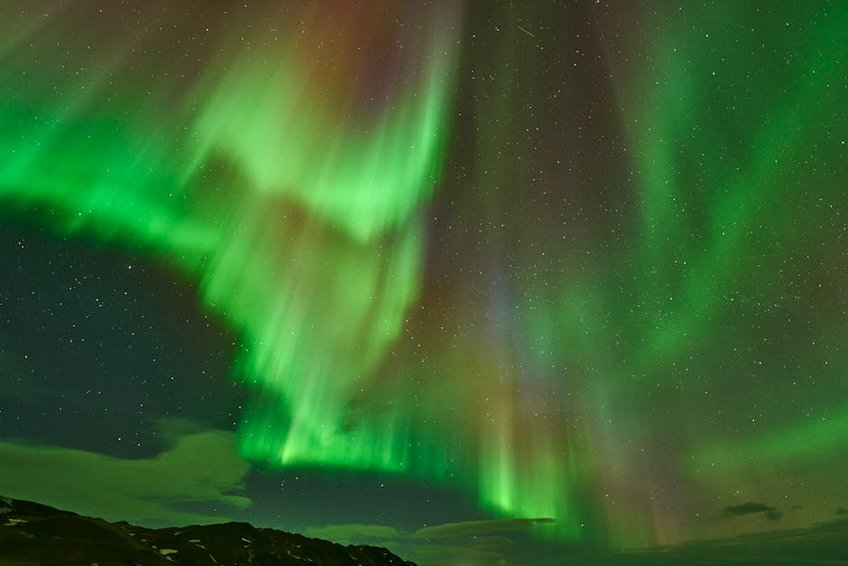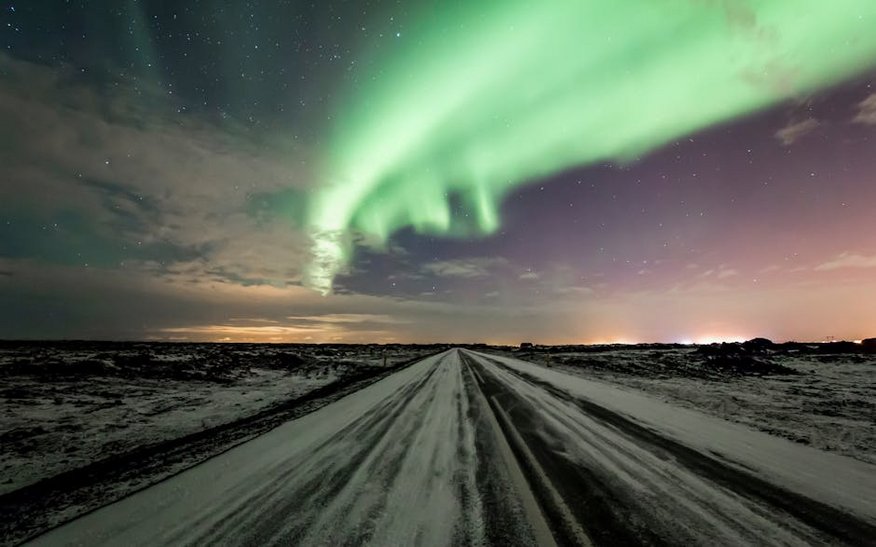Chasing Northern Lights in Iceland
Chasing Northern Lights in Iceland stands as one of the most magical and unforgettable travel experiences you can ever undertake. Imagine standing under a vast, starry Arctic sky as shimmering curtains of green, pink, and violet dance overhead—this natural spectacle transforms cold nights into moments of pure wonder. Iceland’s unique position near the Arctic Circle makes it one of the world’s prime locations for aurora viewing, offering relatively accessible opportunities compared to other polar regions. Whether you’re a passionate photographer aiming to capture that perfect shot or simply someone seeking awe-inspiring natural beauty, the pursuit of the aurora borealis here combines adventure with serene beauty. Successfully chasing Northern Lights in Iceland requires planning, patience, and a bit of luck, but the reward—a personal encounter with one of nature’s most dazzling displays—is absolutely worth every effort. This guide will walk you through everything from optimal viewing times and locations to practical tips that maximize your chances of witnessing this celestial dance.
Chasing Northern Lights in Iceland – Essential Information
Before you embark on your aurora adventure, understanding the fundamental aspects of the Northern Lights will significantly enhance your experience. The aurora borealis occurs when charged particles from the sun collide with gases in Earth’s atmosphere, creating those mesmerizing light displays. In Iceland, this phenomenon is most visible during the winter months when nights are longest and skies are darkest. However, successful viewing isn’t just about being in Iceland during winter; it involves monitoring solar activity, weather conditions, and light pollution levels. You’ll want to familiarize yourself with aurora forecast tools and local weather apps, as clear skies are crucial. Additionally, dressing appropriately for Iceland’s cold temperatures is non-negotiable—thermal layers, waterproof outerwear, and sturdy boots will keep you comfortable during long waits outdoors. Embracing the unpredictability of nature is part of the chase; sometimes the lights appear vividly, while other nights they may be faint or absent altogether, making patience your greatest ally.
What You Need to Know – Understanding Aurora Science
- The Northern Lights result from solar winds interacting with Earth’s magnetic field, primarily visible near the poles—Iceland’s location offers a perfect vantage point without extreme remoteness.
- Aurora activity is measured by the KP index, ranging from 0 (low) to 9 (high); in Iceland, a KP index of 2 or higher often yields visible displays, though stronger activity (KP 3+) creates more dramatic shows.
- Colors vary based on altitude and gas type: green (most common, oxygen at lower altitudes), red/pink (high-altitude oxygen), and purple/blue (nitrogen), with Iceland frequently showcasing vibrant green hues.
- Budget travelers can manage for $100-$150 USD daily by staying in hostels ($30-$50/night), cooking meals, and using public transport or joining affordable group tours ($50-$80 per aurora tour); total 5-day trip: $500-$750.
- Mid-range options cost $200-$300 USD daily with hotels or guesthouses ($100-$150/night), restaurant meals, and rental car ($60-$80/day); including guided tours or activities, 5-day total: $1,000-$1,500.
- Luxury experiences run $400-$600+ USD daily featuring boutique hotels ($200-$300/night), fine dining, private guides ($200-$300/tour), and premium rental SUVs; 5-day total: $2,000-$3,000+.
- Icelandic Met Office Aurora Forecast
- Guide to Northern Lights in Iceland
Key Details – Best Viewing Conditions
To maximize your chances while chasing Northern Lights in Iceland, prioritize nights with minimal cloud cover and darkness—this means heading out between September and April, when Icelandic nights are longest. Solar activity peaks every 11 years (last peak was 2024, making the coming years still favorable), but even during quieter periods, Iceland’s proximity to the Arctic Circle ensures opportunities. Light pollution is your enemy; escape Reykjavik’s glow by traveling to rural areas like Þingvellir National Park or the Westfjords. Many travelers use aurora forecast apps like Vedur.is (Icelandic Met Office) or Aurora Forecast App to track real-time activity. Remember, the lights often appear between 9 PM and 2 AM, though they can surprise you earlier or later. Packing a thermos with hot tea or coffee and snacks can make the wait more enjoyable, as you might spend hours outdoors awaiting nature’s performance.

Chasing Northern Lights in Iceland – Planning Your Trip
Planning is crucial for a successful Northern Lights expedition in Iceland. Your trip should balance aurora chasing with daylight activities, as Iceland offers stunning winter landscapes like glaciers, waterfalls, and hot springs. Ideally, allocate at least 5-7 nights to increase your odds, as aurora visibility depends on clear skies and solar activity—multiple nights allow for weather variability. Booking accommodations in advance is wise, especially in popular areas like Reykjavik, Vik, or Akureyri, but consider staying in countryside guesthouses for darker skies. Renting a vehicle provides flexibility to chase clear patches; a 4×4 is recommended for winter driving on potentially icy roads. Alternatively, guided tours offer expertise and hassle-free transportation, though they limit spontaneity. Budget for additional expenses like thermal clothing rentals or photography gear if needed. Ultimately, a well-planned trip blends anticipation for the lights with enjoyment of Iceland’s other winter wonders, ensuring a fulfilling experience even if the aurora proves elusive one night.
Best Time to Visit Iceland for Northern Lights
The optimal period for chasing Northern Lights in Iceland spans from late September to early April, when darkness prevails for 12+ hours daily. September and October offer milder temperatures (30-40°F / -1 to 4°C) and relatively stable weather, though daylight still limits viewing windows. November to February provides the darkest skies—essential for vivid displays—but brings colder conditions (20-30°F / -6 to -1°C) and higher precipitation risks. March and early April balance longer daylight for sightseeing with still-sufficient darkness, often featuring clearer skies as winter storms subside. Avoid December 21-January 6 if you dislike crowds, as holidays draw more tourists. Solar activity cycles also matter; we’re in a period of heightened activity post-2024 peak, meaning stronger auroras are likely through 2026. Regardless of timing, prioritize moonless nights (check lunar calendars) for the brightest auroras, though even partial moons can create dramatic landscapes.
Budget Planning and Costs
Essential Preparation Checklist
Preparing thoroughly ensures comfort and success while chasing Northern Lights in Iceland. Start by packing layered clothing: thermal base layers, insulating mid-layers like fleece, and a waterproof/windproof outer shell. Essential accessories include warm gloves, a beanie, wool socks, and insulated boots—consider renting gear in Reykjavik if you lack winter equipment. For photography, bring a DSLR or mirrorless camera with manual settings, a sturdy tripod, and extra batteries (cold drains power quickly). Download apps like Vedur.is for weather, Aurora Forecast for activity alerts, and Google Maps offline for navigation. Book accommodations and rental cars early, especially October-March, and consider travel insurance covering weather disruptions. mentally prepare for flexibility; aurora chasing depends on nature, so have backup plans like geothermal spas or museum visits for cloudy nights. Finally, learn basic aurora photography settings (e.g., ISO 1600, f/2.8, 15-second exposure) to capture the magic.
Chasing Northern Lights in Iceland – Top Attractions and Activities
While the aurora is your primary goal, Iceland’s winter landscape offers incredible daytime attractions that complement your Northern Lights adventure. The Golden Circle route—covering Þingvellir National Park, Geysir geothermal area, and Gullfoss waterfall—provides a classic introduction to Iceland’s natural wonders, all accessible from Reykjavik. South Coast highlights like Skógafoss and Seljalandsfoss waterfalls become partially frozen in winter, creating photogenic icy scenes, while black sand beaches near Vik add dramatic contrast. Glacier hiking on Sólheimajökull or ice cave explorations in Vatnajökull National Park offer thrilling adventures, though require guided tours for safety. For relaxation, the Blue Lagoon or lesser-known hot springs like Secret Lagoon provide warm respite from the cold. Each of these activities not only fills your daylight hours but also positions you in optimal rural areas for aurora viewing later, reducing need to travel far at night. Balancing sightseeing with aurora chasing makes your trip richly rewarding beyond the nighttime spectacle.
Must-See Highlights – Prime Aurora Viewing Spots
Certain locations in Iceland are renowned for their optimal conditions when chasing Northern Lights. Þingvellir National Park, just 40 minutes from Reykjavik, offers dark skies and historical significance as a UNESCO site. The Jökulsárlón glacier lagoon on the South Coast provides a stunning backdrop with icebergs reflecting aurora colors—photographers particularly favor this spot. In the north, Lake Mývatn’s geothermal areas and minimal light pollution create dramatic settings, while the Westfjords’ remoteness ensures some of Iceland’s darkest skies. Near Reykjavik, Grotta Lighthouse is accessible but can be crowded; for solitude, head to beaches like Reynisfjara or countryside areas along Route 1. Remember, no single location guarantees sightings—check cloud forecasts nightly and be ready to drive to clear areas. Many hotels outside cities also offer aurora wake-up services, alerting guests if lights appear, adding convenience to your chase.
Hidden Gems and Local Favorites
Beyond popular spots, Iceland harbors lesser-known locales that enhance your Northern Lights experience. The Snæfellsnes Peninsula, often called “Iceland in Miniature,” features dark skies with iconic Kirkjufell mountain as a foreground—ideal for photography. East Iceland’s Seyðisfjörður fjord offers sheltered valleys with reduced wind, making aurora waits more comfortable. Local favorites include the hot river hike in Reykjadalur Valley (daytime activity) or community pools in small towns like Hofsós, where you might spot lights while soaking. For unique stays, consider farm accommodations in the countryside or glass-roofed cabins like those in Golden Circle area, allowing aurora viewing from warmth. Engaging with locals in rural areas can also yield tips—Icelanders often know micro-weather patterns better than apps. These hidden gems not only increase your aurora odds but provide authentic cultural experiences, making your trip memorable beyond the lights.
Chasing Northern Lights in Iceland – Practical Travel Information
Navigating Iceland during aurora season requires attention to practical details that ensure safety and enjoyment. Transportation is key; while Reykjavik has buses, renting a car offers freedom to chase clear skies—opt for a 4×4 SUV October-April for handling snow and ice. Driving requires caution: always check road.is for conditions and never venture off marked roads. Accommodation ranges from city hotels to rural guesthouses; book early, especially near prime aurora sites. Communication is easy with widespread English, but learning basic Icelandic phrases like “Takk” (thank you) is appreciated. Currency-wise, Iceland uses Icelandic króna (ISK), though credit cards are accepted everywhere—carry some cash for remote areas. Health and safety involve dressing for cold (wind chill can drop below -10°F / -23°C) and being aware of weather alerts; emergency number is 112. Lastly, respect nature: stay on paths, avoid disturbing wildlife, and follow leave-no-trace principles to preserve Iceland’s pristine environment.
| Category | Options/Features | Price Range (USD) |
|---|---|---|
| Accommodation | Hostels, guesthouses, hotels, boutique stays | $30-$300+/night |
| Transportation | Rental car (economy to SUV), guided tours, public buses | $50-$150/day rental; $50-$300/tour |
| Food & Dining | Budget eateries, mid-range restaurants, fine dining | $15-$50/meal; grocery $30-$50/day |


